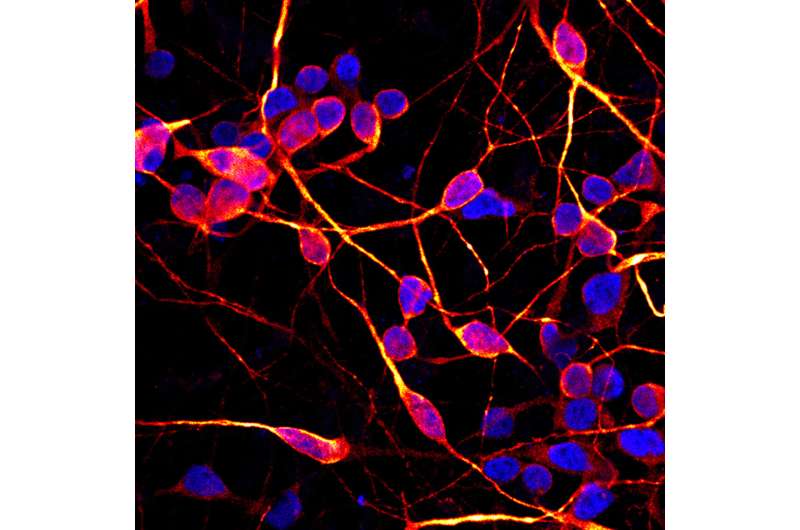What happens in the bodies of ALS patients?

Amyotrophic lateral sclerosis (ALS) is an incurable disease of the central nervous system. In most cases, ALS is fatal within a short period following diagnosis. However, people sometimes live with the disease for decades, as did the astrophysicist Steven Hawking. What happens in the body of an ALS patient? Muscle movement is controlled by specialised neurons called motor neurons. During the course of the disease, motor neurons gradually die. As ALS progresses, patients increasingly suffer from muscle weakness and paralysis, which leads to speech, movement and swallowing disorders, and severe restrictions in daily life.
Which processes lead to neuronal death? This is not yet fully understood, but research has shown that changes in the behavior of certain proteins are directly related to ALS. One of these proteins is the RNA-binding protein FUS (Fused in Sarcoma), which plays a crucial role within cells since it regulates genetic messengers and participates in the interaction of different proteins. Mutations in FUS cause FUS to deposit and aggregate in the cytoplasm, causing one of the most aggressive forms of ALS.
Lara Marrone and Jared Sterneckert from the Centre for Regenerative Therapies Dresden (CRTD) at Technische Universität Dresden (TUD), together with collaborating scientists from Germany, Italy, the Netherlands, and the USA, have now discovered that interactions between RNA-binding proteins are more critical to ALS pathogenesis than previously thought. The results are published in Acta Neuropathologica.
In the paper, the research team showed that impaired FUS protein-protein interactions disrupt the balance (homeostasis) of RNA-binding proteins, which significantly contributes to the degeneration of neurons. The scientists also showed that drug-induced protein degradation (autophagy) reduces the pathological processes linked to aberrantly accumulated FUS. Stimulating autophagy rescued these RNA-binding proteins and reduced neuronal death. These improvements were observed in cell culture experiments with reprogrammed stem cells (iPS cells) from patients and validated using as the fruit fly as a model organism.
Lara Marrone, Ph.D. student at the CRTD and lead author of the study, explains: "Mislocalised FUS overwhelms the protein degradation machinery, causing FUS to accumulate within the cytoplasm. This triggers a vicious circle that further hampers the cellular protein quality control systems responsible for the maintenance of protein homeostasis. This is why we speculated that enhancing autophagy could also ameliorate the observed RNA-binding phenotypes". The Sterneckert group will now investigate the extent to which enhancing autophagy is a possible therapeutic approach for ALS patients. A further goal of their research is to use RNA-binding proteins in patient samples as biomarkers for the disease.
More information: Lara Marrone et al. FUS pathology in ALS is linked to alterations in multiple ALS-associated proteins and rescued by drugs stimulating autophagy, Acta Neuropathologica (2019). DOI: 10.1007/s00401-019-01998-x


















